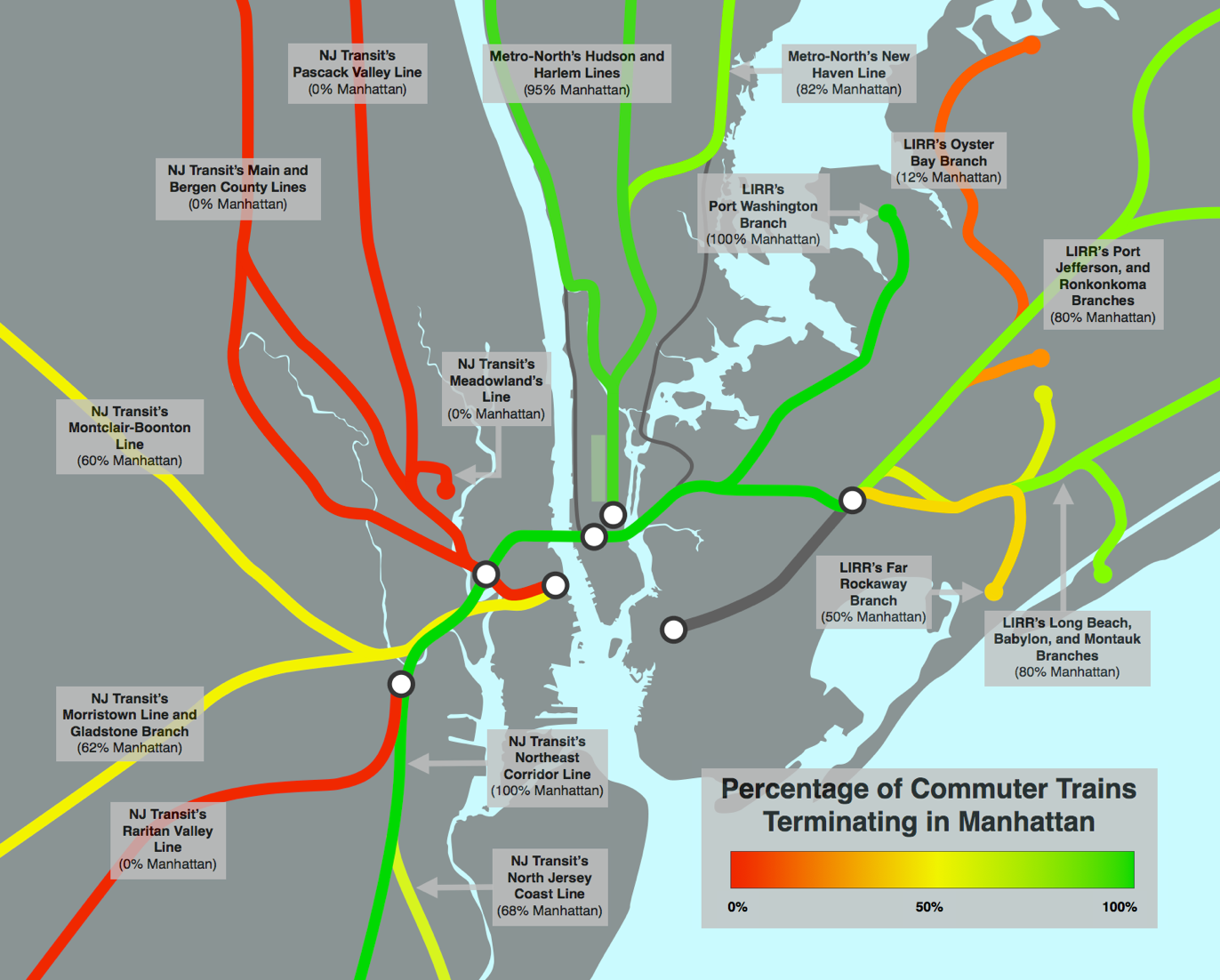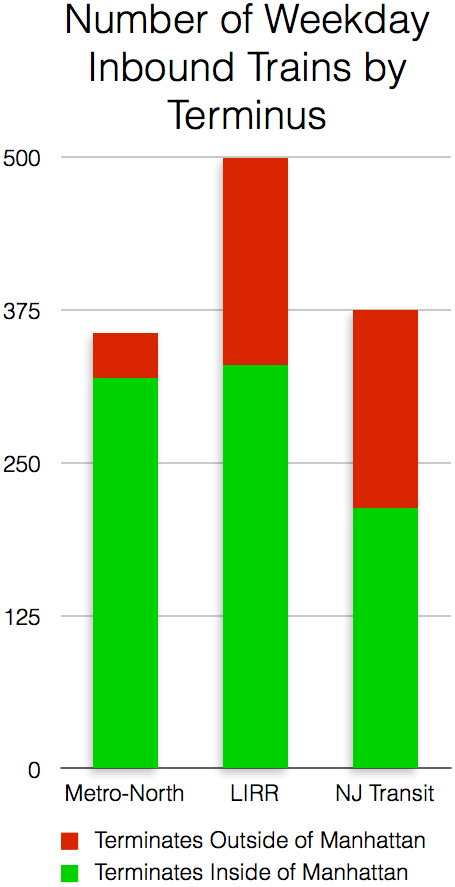Table of Contents
Download Planning for a New Northeast Corridor:

Download The Hudson Terminal Plan:

Download the Trends & Opportunities Report:

Comparative Access to Trains Terminating in Manhattan
More than 75% of Manhattan workers rely on mass transit to commute to work. In addition, and as discussed earlier in this report, an increasing number of residents from northern New Jersey are commuting to Manhattan as fewer residents in Long Island and Westchester are commuting to Manhattan relative to population growth. Yet, despite these changes in metropolitan commuting, the current availability of direct, one-seat rail lines to Manhattan is not proportionate to the growing and declining demand for these routes throughout the metropolitan region.
Out of the three regional rail systems, MTA Metro-North has the highest percentage of daily trains terminating in Manhattan at Grand Central Terminal. Out of 356 weekday inbound trains, 319 of them, or 89.6%, terminate at Grand Central, with the remainder requiring a transfer at an intermediate station. In addition, of the 37 daily trains that terminate outside of Grand Central Terminal, 100% of them connect to trains that do terminate in Manhattan.
Inbound MTA LIRR trains, on the other hand, may terminate at either New York Penn Station, Atlantic Terminal in Brooklyn, Jamaica Station in Queens, or Long Island City and Hunterspoint Avenue in Queens. From an infrastructural standpoint, however, aside from LIRR’s Port Washington Branch, every LIRR line originating east of Jamaica is capable of terminating at any of the LIRR terminal stations. The only infrastructural limitation keeping certain trains originating in eastern Long Island from terminating in Manhattan is a lack of rail electrification, although several of these lines have circumvented this restriction by using dual-mode locomotives. Of the 499 daily inbound LIRR trains, 330 of them, or 66.1%, terminate at New York Penn Station in Manhattan.
Service to Manhattan is worst for NJ Transit trains, mostly due to the layout of existing rail infrastructure. Originally, all trains along NJ Transit’s lines terminated on the banks of the Hudson River in New Jersey. With the opening of the North River Tunnels and New York Penn Station in 1910, a number of trains along the Northeast Corridor were rerouted to Manhattan. In 1996, the completion of the Kearny Connection brought a number of NJ Transit trains on the Morris & Essex Lines into Manhattan as well. Finally, the opening of Secaucus Junction in 2003 allowed passengers along NJ Transit’s Main, Bergen County, and Pascack Valley Lines to transfer to Manhattan-bound trains. However, these trains, and all other trains not using either the Kearny Connection or traveling along the Northeast Corridor must still terminate in Hoboken, NJ. The Raritan Valley Line, which connects to the Northeast Corridor, still terminates at Newark Penn Station because of a lack of rail electrification and limited capacity within New York Penn Station. Of the 375 daily inbound NJ Transit trains, only 213, or 56.8%, terminate at New York Penn Station in Manhattan. However, unlike certain Metro-North and LIRR trains, which terminate at other locations due to electrification issues, three entire NJ Transit lines are incapable of terminating at New York Penn Station because there is no rail link from those lines to the North River Tunnels. Thus, even though recent transit improvements have brought the percentage of NJ Transit trains terminating in Manhattan up to slightly over 50%, it is unlikely that this percentage will continue to increase without significant infrastructural changes.


